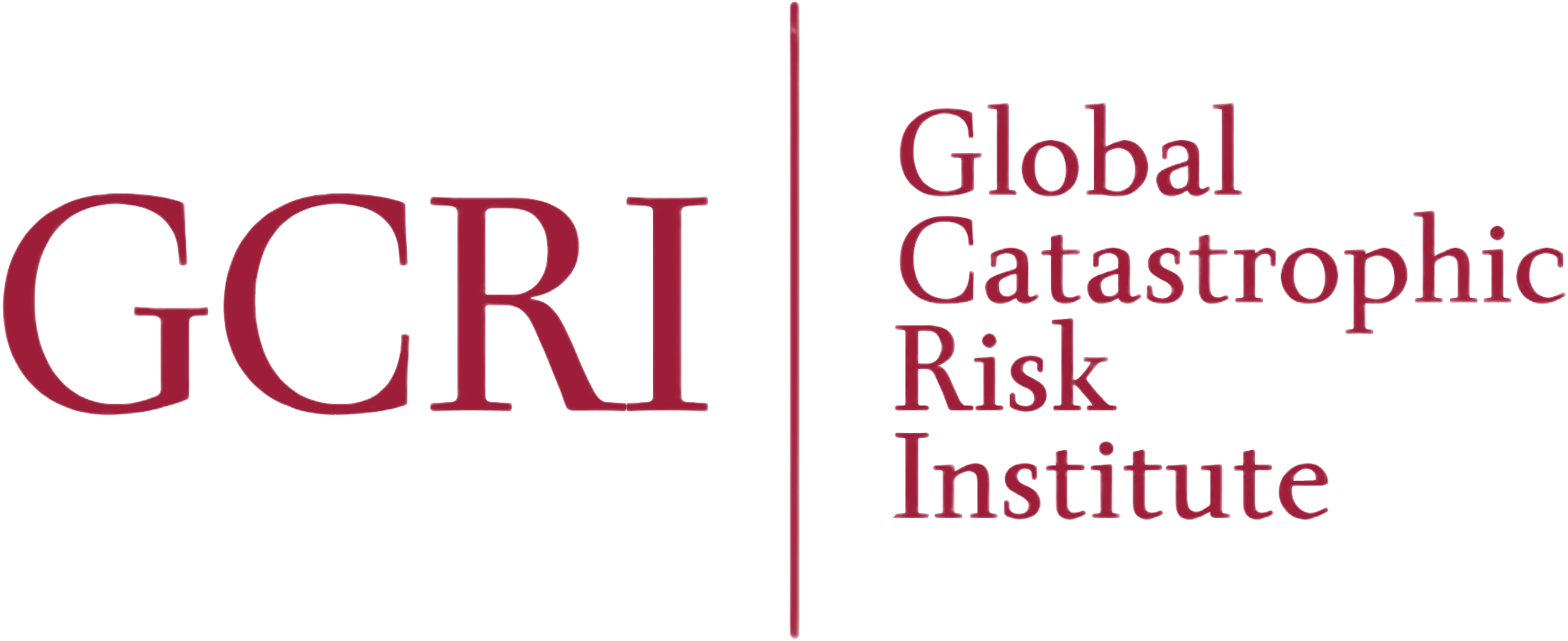Solutions & Strategy
Addressing global catastrophic risk is often easier said than done. The risks themselves are complex and uncertain, and efforts to address them must navigate a world that is often focused more on other issues. Careful strategies are needed to successfully reduce the risk.
Some ideas work better in theory than in practice. For years, academic climate change policy researchers have advocated for market-based solutions like a carbon tax or a cap-and-trade regime. These concepts are theoretically advantageous because they create efficient, economy-wide incentives for greenhouse gas emissions reduction. However, in some places, such as the United States, these ideas lack political support because new taxes are unpopular. And so, despite strong support from experts, market-based climate policies have often failed to take hold.
Other, more particular approaches have sometimes succeeded where the market-based climate policies have failed. This includes solutions that, at first glance, might not even appear to be targeted at climate change. For example, policies to increase the U.S. housing supply have shown appeal across the political spectrum. These policies are primarily motivated by rising housing costs, but they have the additional effect of increasing urban density, enabling more people to live in smaller, more energy efficient apartments and walkable neighborhoods, which is a significant win for reducing greenhouse gas emissions. These housing policies are in a sense market-based, but they are not a new tax—instead, they reduce restrictions on construction so that markets can increase the supply enough to bring down prices. It’s a win-win solution for housing affordability and climate change, and it’s one that can often succeed politically.

Using housing policy to address climate change is a good example of the global catastrophic risk strategy that GCRI has long advocated for. We believe that solutions for addressing global catastrophic risk should work well in theory and in practice: they should be designed to achieve meaningful reductions in the risk and to be viable from the perspective of whoever needs to implement it. This recognizes that not everyone shares our concern for global catastrophic risk, and so some creativity can help to get them involved. This includes win-win solutions that address whatever it is that they care about while also bringing some benefits for reducing global catastrophic risk. People do tend to care about global catastrophic risk at least a little bit—almost everyone agrees a global catastrophe would be very bad—but they may need more than that to be motivated to act.
Fortunately, there are many practical, win-win solutions for global catastrophic risk. Some that we have worked on include national security policy that achieves deterrence goals while reducing the risk of global catastrophe from nuclear winter, corporate governance measures to address both near-term and long-term AI issues, politically viable refuges to protect populations during global catastrophe, and housing and transportation policies that help reduce greenhouse gas emissions. Pursuing these solutions can achieve worthwhile wins for reducing global catastrophic risk while expanding the coalition of people involved in addressing the risk.

Despite the value of win-win solutions, it is still possible to make progress through direct appeals to the importance of global catastrophic risk. Getting people to care about global catastrophic risk is not always an impossible task. For example, the U.S. Global Catastrophic Risk Management Act of 2022 became law as part of the omnibus James M. Inhofe National Defense Authorization Act for Fiscal Year 2023. The fact that the U.S. government created and enacted dedicated legislation for global catastrophic risk demonstrates that direct appeals can work, even at the highest levels of power. It is important to pursue these direct solutions where opportunities exist.
Solutions targeted at the entire category of global catastrophic risk have additional value for simultaneously addressing multiple global catastrophic risks. This is part of an all-hazards approach to global catastrophic risk. Governments often take an all-hazards approach to other risks, especially for emergency management, to leverage synergies across the risks. The same capabilities are often of value for multiple risks. The global catastrophic risks are diverse, but they have some shared characteristics, such as their extreme and unprecedented severity. Likewise, some activities can help for multiple global catastrophic risks, such as refuges for surviving a variety of global catastrophes. See also GCRI’s work on cross-risk evaluation & prioritization.

It can be argued that the bottom line for any issue is whatever can be done to address it. An issue could be extremely important, but if we can’t do anything about it, then what’s the difference? It would be better to focus efforts on a smaller issue that we can meaningfully affect. Global catastrophic risk is a very large issue and there are meaningful ways for many people to affect it. The formulation of successful solutions and strategy should be part of any effort to address global catastrophic risk.
Featured GCRI Publications on Solutions & Strategy
A major strategic challenge comes from the diversity of views that people hold about global catastrophic risk. People who focus on global catastrophic risk are often motivated by an argument about potential effects on the far future, but other people are less moved by this. This paper examines prospects for addressing global catastrophic risk given the diversity of views about the far future. It surveys strategies for addressing the risk that may not require concern about the future.
All-hazards policy for global catastrophic risk
Whereas policy for global catastrophic risk often addresses one risk at a time, it is often advantageous for governments to pursue cross-cutting policies. Such policies would be analogous to the all-hazards policies used for other areas of risk policy, especially emergency disaster response. This report develops two concepts for all-hazards global catastrophic risk policy: policy to address the entire category of global catastrophic risk and policy to address specific issues that intersect with multiple global catastrophic risks.
Reconciliation between factions focused on near-term and long-term artificial intelligence
For many years, progress on AI governance has been held back by infighting among groups with different ideas for what AI governance should pursue, in particular whether it should focus on near-term or long-term AI issues. This paper proposes that the two factions instead focus their energies on the many specific governance measures they agree on, including shifting norms toward concern about AI issues, improving the safety and ethicality of AI system designs, and advancing public policy.
Full List of GCRI Publications on Solutions & Strategy
Sepasspour, Rumtin, 2023. All-hazards policy for global catastrophic risk. Global Catastrophic Risk Institute Technical Report 23-1.
Baum, Seth D., 2023. Even with electric vehicles, an expanded Turnpike Extension would be bad for the environment. The Jersey Journal, 9 January.
Baum, Seth D., 2022. New York’s housing plans must address affordability-& climate change. City Limits, 29 December.
Baum, Seth D. and Vanessa M. Adams, 2022. Pandemic refuges: Lessons from two years of COVID-19. Risk Analysis, vol. 43, no. 5 (May), pages 875-883, DOI 10.1111/risa.13953.
Baum, Seth D., 2021. Artificial interdisciplinarity: Artificial intelligence for research on complex societal problems. Philosophy & Technology, vol. 34, no. S1 (November), pages 45-63, DOI 10.1007/s13347-020-00416-5.
Brown, Jared, 2020. The Defense Production Act and the failure to prepare for catastrophic incidents. War on the Rocks, 14 April.
Baum, Seth D., 2019. Risk-risk tradeoff analysis of nuclear explosives for asteroid deflection. Risk Analysis, vol. 39, no. 11 (November), pages 2427-2442, DOI 10.1111/risa.13339.
Umbrello, Steven and Seth D. Baum, 2018. Evaluating future nanotechnology: The net societal impacts of atomically precise manufacturing. Futures, vol. 100 (June), pages 63-73, DOI 10.1016/j.futures.2018.04.007.
Baum, Seth D., 2018. Countering superintelligence misinformation. Information, vol. 9, no. 10 (September), article 244, DOI 10.3390/info9100244.
Baum, Seth D., 2017. On the promotion of safe and socially beneficial artificial intelligence. AI & Society, vol. 32, no. 4 (November), pages 543-551, DOI 10.1007/s00146-016-0677-0.
Baum, Seth D., 2018. Reconciliation between factions focused on near-term and long-term artificial intelligence. AI & Society, vol. 33, no. 4 (November), pages 565-572, DOI 10.1007/s00146-017-0734-3.
Baum, Seth, 2016. Tackling near and far AI threats at once. Bulletin of the Atomic Scientists, 6 October.
Baum, Seth D., David C. Denkenberger, and Joshua M. Pearce, 2016. Alternative foods as a solution to global food supply catastrophes. Solutions, vol. 7, no. 4, pages 31-35.
Baum, Seth D., 2015. The far future argument for confronting catastrophic threats to humanity: Practical significance and alternatives. Futures, vol. 72 (September), pages 86-96, DOI 10.1016/j.futures.2015.03.001.
Baum, Seth D., 2015. Confronting the threat of nuclear winter. Futures, vol. 72 (September), pages 69-79, DOI 10.1016/j.futures.2015.03.004.
Baum, Seth D., David C. Denkenberger, and Jacob Haqq-Misra, 2015. Isolated refuges for surviving global catastrophes. Futures, vol. 72 (September), pages 45-56, DOI 10.1016/j.futures.2015.03.009.
Baum, Seth D. and Bruce E. Tonn, 2015. Introduction: Confronting future catastrophic threats to humanity. Futures, vol. 72 (September), pages 1-3, DOI 10.1016/j.futures.2015.08.004.
Baum, Seth, 2015. Should nuclear devices be used to stop asteroids? Bulletin of the Atomic Scientists, 17 June.
Baum, Seth D., David C. Denkenberger, Joshua M. Pearce, Alan Robock, and Richelle Winkler, 2015. Resilience to global food supply catastrophes. Environment Systems and Decisions, vol. 35, no. 2 (June), pages 301-313, DOI 10.1007/s10669-015-9549-2.
Baum, Seth, 2015. Is stratospheric geoengineering worth the risk? Bulletin of the Atomic Scientists, 5 June.
Baum, Seth, 2015. On winter-safe deterrence and interdisciplinary research. Bulletin of the Atomic Scientists, 2 April.
Baum, Seth, 2015. On winter-safe deterrence and biological weapons. Bulletin of the Atomic Scientists, 20 March.
Baum, Seth, 2015. Getting smart about global catastrophes. Medium, 16 March.
Baum, Seth D., 2015. Winter-safe deterrence: The risk of nuclear winter and its challenge to deterrence. Contemporary Security Policy, vol. 36, no. 1 (April), pages 123-148, DOI 10.1080/13523260.2015.1012346.
Baum, Seth, 2015. Deterrence, without nuclear winter. Bulletin of the Atomic Scientists, 9 March.
Baum, Seth, 2015. Support the Austria Pledge. Bulletin of the Atomic Scientists, 27 January.
Baum, Seth D., 2014. The great downside dilemma for risky emerging technologies. Physica Scripta, vol. 89, no. 12 (December), article 128004, DOI 10.1088/0031-8949/89/12/128004.
Baum, Seth and Grant Wilson, 2013. How to create an international treaty for emerging technologies. Institute for Ethics and Emerging Technologies, 21 February.
Baum, Seth D., Timothy M. Maher, Jr., and Jacob Haqq-Misra, 2013. Double catastrophe: Intermittent stratospheric geoengineering induced by societal collapse. Environment Systems and Decisions, vol. 33, no. 1 (March), pages 168-180, DOI 10.1007/s10669-012-9429-y.
Wilson, Grant, 2012. Emerging technologies: Should they be internationally regulated? Institute for Ethics and Emerging Technologies, 21 December.
Wilson, Grant S., 2013. Minimizing global catastrophic and existential risks from emerging technologies through international law. Virginia Environmental Law Journal, vol. 31, no. 2, pages 307-364.
Image credits: apartment construction: Xnatedawgx; Covid lockdown: Voice of America; bunker entrance: Dietmar Rabich
